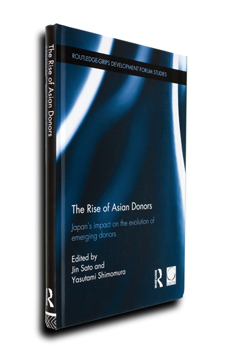Introduction

Why do poor countries give aid to others? This book critically examines how aspirations for providing aid have coexisted with experiences of receiving aid and have transformed the practice of giving aid, with particular reference to the experiences of Japan and China. It highlights the historical sources that explain the pattern and strength of foreign aid that these new donors provide.
ti The book has systematically examined the situation unique to middle income countries that are receiving and giving aid simultaneously. It sheds light on the endogenous elements embedded in the socio-economic conditions of emerging donors, as well as their learning process as aid recipients. This book examines not only the perspectives of recipients, but also those of donors: Japan in the case of China, and the USA and the World Bank in the case of Japan. bringing in the donor’s perspective, we come to a holistic understanding of foreign aid as a product of interaction between the various agents involved. The book provides not only an in-depth case study of Japan from a historical perspective, but also stretches its scope to cover contemporary debates on “emerging donors,” including China, India and Korea who have received substantial amount of aid from Japan in the past. This book connects the often separated discussion of Japanese aid and the way it developed in relation to outside forces.
In short, this book represents the first attempt to empirically examine the “life of a donor” with a clear focus on the origins, struggles, and futures of non-western donors and their impact on established aid regime.
Contents
| 1. | Introduction: aiding development – how does recipient experience count? | JIN SATO |
|---|---|---|
| Part 1: | Japan’s emergence from a recipient to a donor | |
| 2. | Domestic functions of economic cooperation: Japan’s evolution as a donor in the 1950s | JIN SATO |
| 3. | How US aid in the 1950s prepared Japan as a future donor | TOSHIHIRO HIG UCHI |
| 4. | Technology transfer and technology development in post-World War II Japan triggered by World Bank projects | MIKIYASU NAKAYAMA AND RYO FUJIKURA |
| 5. | World Bank Regional Development Projects in Japan: two pilot farm projects, 50 years later | RYO FUJIKURA AN D MIKIYASU NAKAYAMA |
| Part 2: | The rise of emerging donors and Japan’s impact | |
| 6. | Donors’ impact on China: How have major donors affected China’s economic development and foreign aid policy? | SHINO WATANABE |
| 7. | The evolution of “aid, investment, trade synthesis” in China and Japan | YASUTAMI SHIMOMURA AND WANG PING |
| 8. | Korea’s pathway from recipient to donor: How does Japan matter? | HISAHIRO KONDOH |
| 9. | Role of Japan in the evolution of Indian aid policy | HIROAKI SHIGA |
| Conclusion | YASUTAMI SHIMOMURA | |
| Index |
Jin SATO and Yasutami Shimomura, eds.
The Rise of Asian Donors: Japan’s Impact on the Evolution of Emerging Donors
Routledge-GRIPS Development Forum Studies, 200 pages, 2012年9月, ISBN: 978-041552439-1
Publisher's Page
Edited By Jin Sato, Transboudary Resources and Environment in Mainland Southeast Asia
